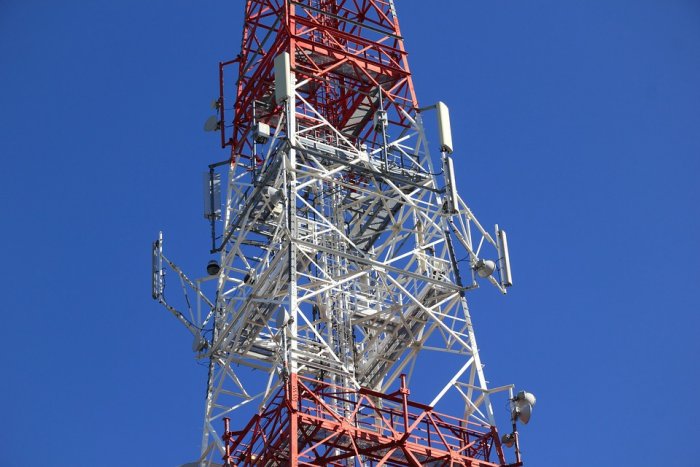Sofrecom adopted the perspective of a TowerCo to analyze the data released by ANFR as of end-November 2019, and compare it to that of November 2018.
The French National Frequencies Agency (ANFR) has made its data on radio-electrical installations across the nation available for viewing [1]. Offered in open-data format, they make it possible for anyone to find out the locations of mobile operators’ sites across the country, along with the frequencies transmitted. Telecoms operators thus enjoy a complete picture of the mobile access infrastructures authorized by ANFR, as well as those actually in service. Consequently, they know where their competitors can be found. The local authorities, meanwhile, can monitor how site and frequency deployments are proceeding at the level of their territory. Last but not least, individuals can use the information to locate the site nearest them. Yet there are still other players, less conspicuous, for whom the ANFR data are a treasure trove of information. These are the TowerCos – companies that own towers, pylons or ground-based towers on which operators install their antennae.
Cell site facilities: passive infrastructure sharing on the rise
Above and beyond the deployment of 4G, which is gaining speed in rural areas, operators are all rolling out new sites, and doing so at a brisk pace. Orange activated some 800 sites between November 2018 and November 2019. Over the same period, SFR commissioned 600 sites, Bouygues Télécom 1,600 and Free more than 2,200. In total, more than 5,200 radio sites were activated in a single year. This figure far exceeds the number of new builds. As surprising as it may seem, though operators are building new ground-based towers in the French countryside to cover white and gray areas, they are activating many more antennae on existing sites than they are erecting new ones. The rapid rise of site sharing is thus the defining trend on the French market today.
Not all sites lend themselves so readily to sharing. Ground-based towers are the easiest sites to share. In contrast, it is difficult to host multiple operators on the same roof-terrace mast In this regard, operators show a fairly similar mix:
- about 2/3 consist of ground-based tower type sites (mostly rural),
- ¼ of rooftop terraces (generally urban),
- and the remainder on water towers, churches and other buildings, structures and monuments.
Ground-based towers: sharing sites par excellence
Who are the ground-based towers’ actual owners? How are they shared today?
Operators and their infrastructure subsidiaries own just under 16,000 out of a total of nearly 26,000 ground-based towers in service. Meanwhile, the TowerCos independent from operators have around 7,000. The rest of the infrastructure fleet belongs to players outside the telecoms sector, such as SNCF, EDF and the water distribution companies. As far as telecoms operators are concerned, SFR and Bouygues, in particular through their joint RAN-Sharing agreement, post the highest tower-sharing rate. This is reflected in their “tenancy ratios”, which are the highest out of all 4 operators: 2.3 and 1.9 respectively. Meanwhile, Orange reached only 1.5 while Free, which is 97% alone on its ground-based towers, recorded a ratio of 1.05.
Ground-based tower-sharing in France as at end-2019
However, the champions of passive infrastructure sharing are the TowerCos. And the top performers in this area are TDF, with a tenancy ratio of 2.48 and American Tower Corporation at 2.79. Cellnex is the latest arrival in France and owns only a very small fleet. It posts a rate of only 2.15 on its ground-based towers.
Open data to find out more about TowerCos
ANFR’s open database, while valuable, remains incomplete. In particular, it does not offer a comprehensive view of sharing on the French market. For that to happen, it would need to enable analysis of roof-top terraces. It would also need to distinguish the ground-based towers at operators’ TowerCo subsidiaries, such as Hivory owned by SFR and KKR. Lastly, the RAN-Sharing agreements between operators (e.g., Crozon, mobile New Deal) artificially inflate sharing indicators today: only one operator has active equipment on a ground-based tower, transmitting that signal on behalf of one, two or even three other operators. In reality, the rent received comes in principle from a single operator, the one that is the “leader” at the site.
On the road to ever more sharing
Passive infrastructure sharing, in which the active equipment of multiple operators is hosted on the same tower, still enjoys attractive growth prospects in France. The sale of the Free and Bouygues Telecom towers, as well as the creation of a TowerCo subsidiary by SFR show that this has not escaped operators’ attention. These endeavors will definitely generate all the more value for operators as they are being initiated early, when sharing is still developing. To gain commercial value from the towers, operators will above all need to take advantage of their potential for incremental pooling. However, the announced arrival of a major player such as Orange will reshuffle the deck, definitely impacting the ability of active players to achieve their ambitious tenancy ratio targets. There is thus every reason to wonder how SFR-Hivory will achieve its stated objective of 2 tenants per site on average when its ground-based towers are already shared at the level of a TowerCo and its roof terraces cannot be shared...
[1] Cartoradio





